September 6th was World Shorebirds Day, and as any local library or video store can attest, I am not always known for my punctuality. So, I bring forth my shorebird offerings to the blogosphere a day late (or two) and few shorebirds short. Like any birder thinking inside the box, when August rolled around I was zeroed in on shorebirds as they are making their epic, transhemispheric migrations and occasionally stop over for a meal and a rest on their way south.
One always hopes for a classic mudflat on a drawn-down lake or a flooded field when shorebirding. Sometimes those just can’t be found. Sometimes one must bird the bottom of the barrel…or the top of a poop pond. I scoured many a wastewater treatment facilities at small municipalities in the area. Occasionally I came up with some solids, like this trio of Red-necked Phalaropes.
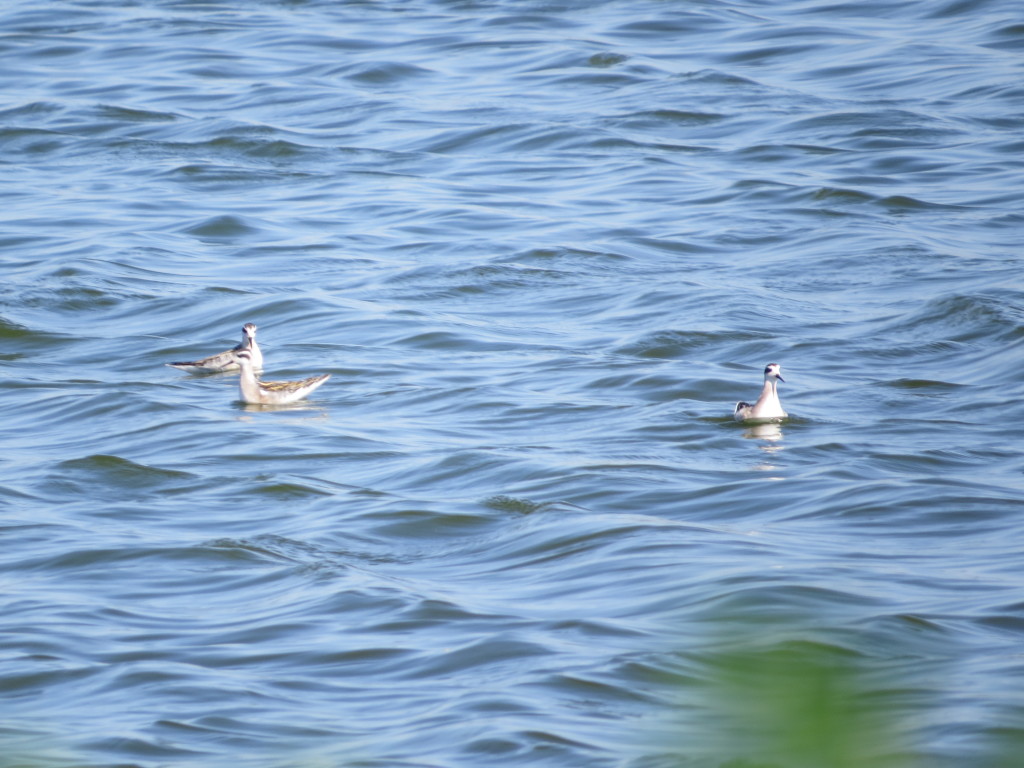
Red-necked Phalaropes at Blomkest WTP
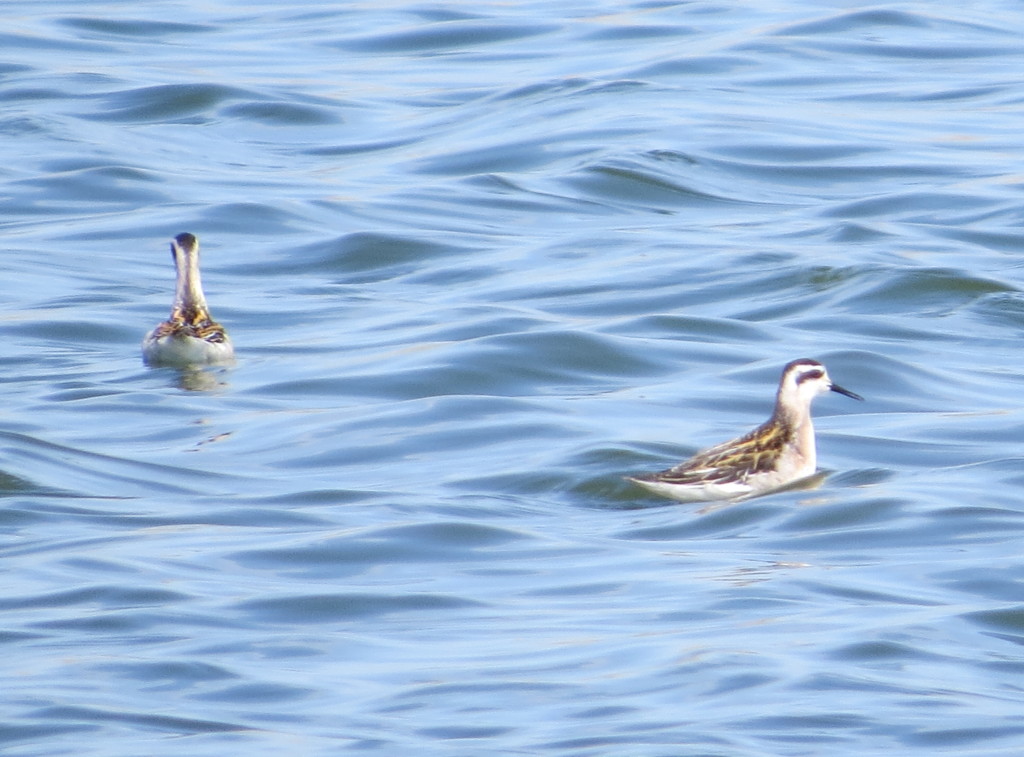
Or some Semipalmated Sandpipers, which I pleasantly discovered was a new county bird after-the-fact.
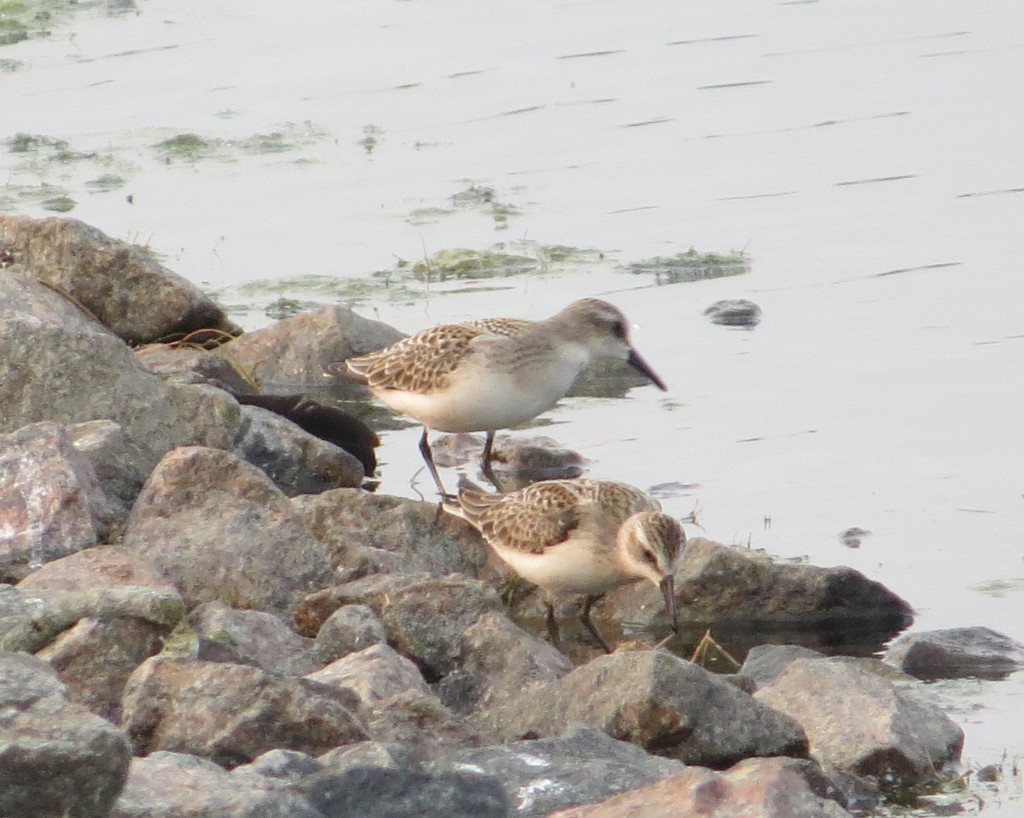
Semipalmated Sandpipers at Lake Lillian WTP
Once I even got some good looks at a nice year bird, the Semipalmated Plover.
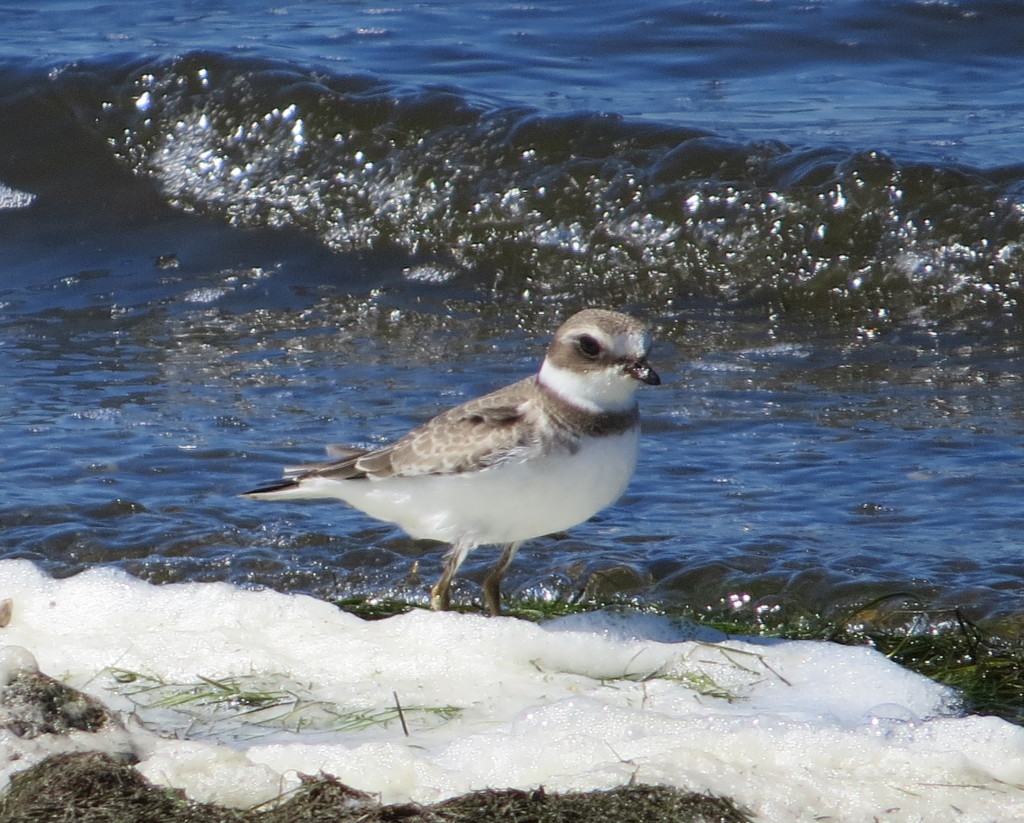
Semipalmated Plover at Bird Island WTP
Bad dad moment confession: the kids were with me for this one but in the car, opting to watch their video instead of shorebirds; half-way home I remembered this bird is one Evan had never seen and I had killer-no-binos-needed looks. You might say I flushed that opportunity away. Amiright?
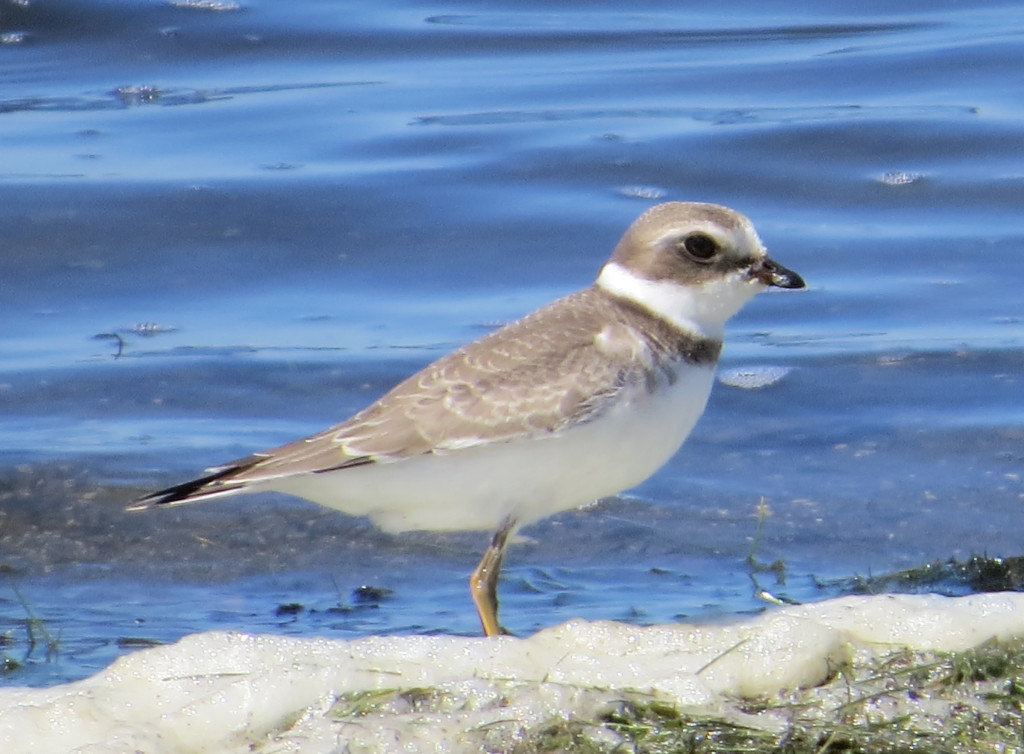
I was as red-faced as this Stilt Sandpiper, which isn’t much but the appropriate amount since Evan is a take-it-or-leave-it birder these days.
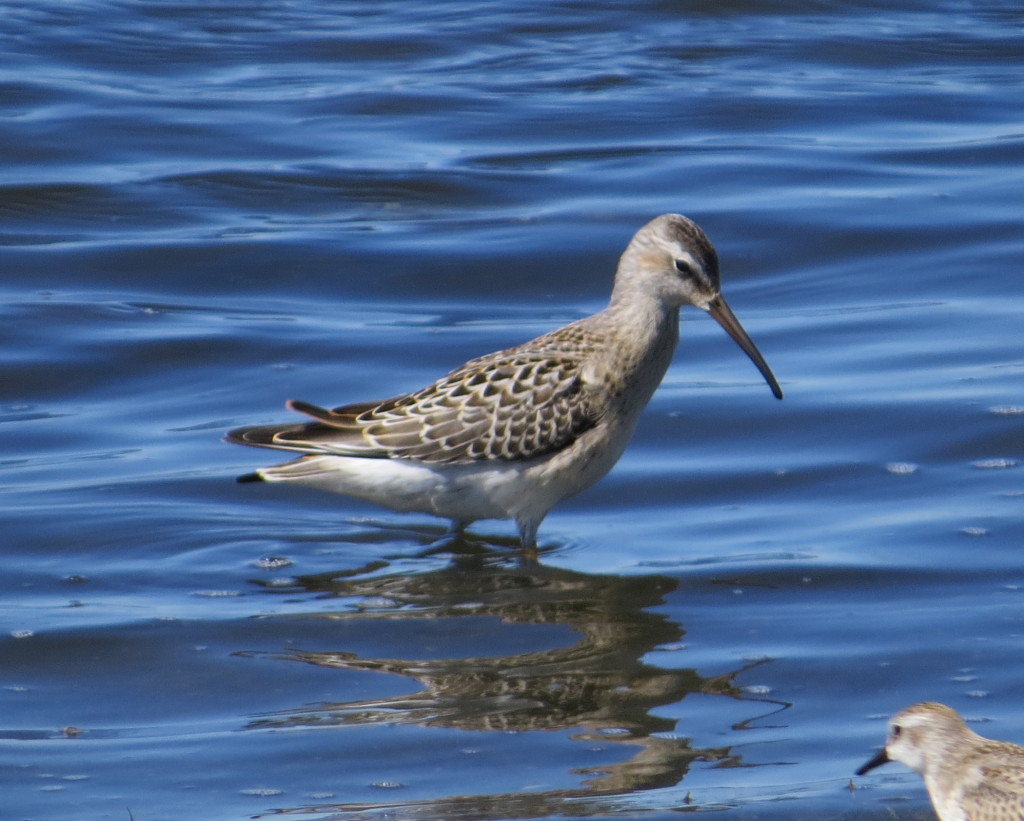
Stilt Sandpiper at Bird Island WTP
Growing tired of the Tour-de Ponds, I kinda gave up on birding for awhile as work responsibilities took up more of my time. Then one day while I was sitting at home I had a recollection that instantly morphed into an epiphany. Near the end of July I remembered driving home with the family late in the evening after having spent the weekend in Duluth, and I recalled seeing a small, flooded spot in a soybean field not far from home with some sandpipery-looking birds even. We were too tired to stop, and so this patch was soon forgotten and never thought about for weeks. Until that moment. Instantly I headed for the door as I realized I had left a habitat-island of prime shorebird mudflats unchecked for all that time. When I got out there and saw how perfect the spot was in a landscape bereft of optimal habitat, I was kicking myself.
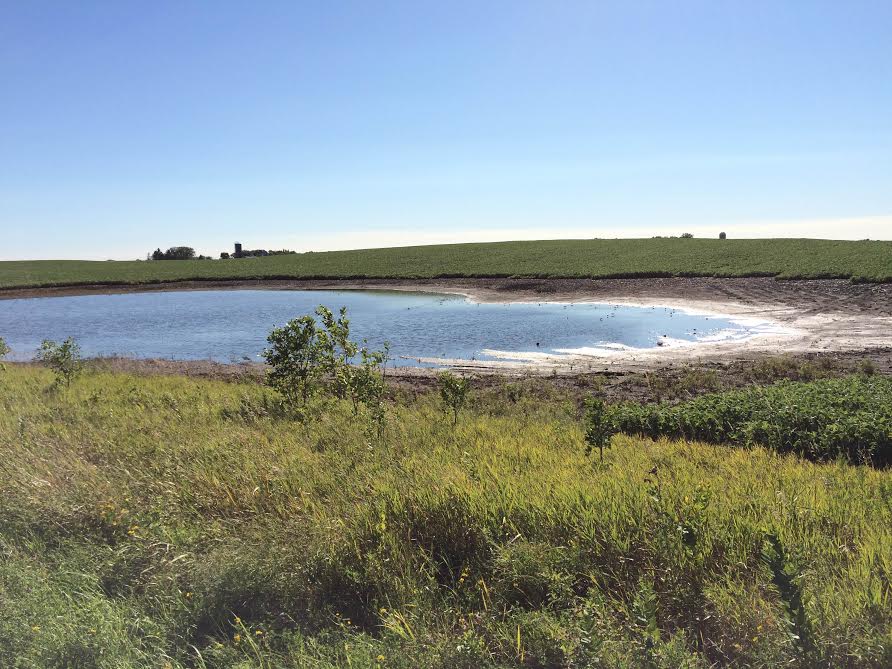 The flooded drain tile intake that created this spot was only about two acres in size. When there is no other habitat around, that is all you need. At first, there was nothing but Killdeer and the odd Lesser Yellowlegs or two, harbingers of good things to come.
The flooded drain tile intake that created this spot was only about two acres in size. When there is no other habitat around, that is all you need. At first, there was nothing but Killdeer and the odd Lesser Yellowlegs or two, harbingers of good things to come.
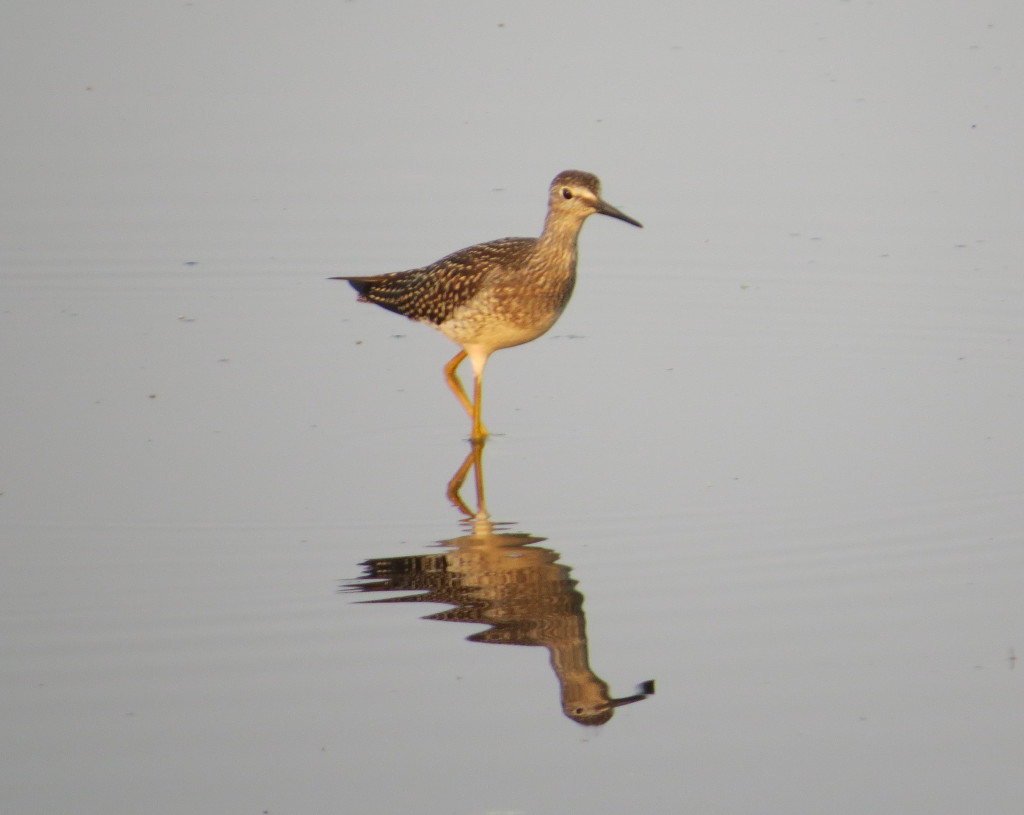 So this is the story of my accidental patch. Having it so close to home gave me the opportunity to check it multiple times a day, day after day. Before I knew it, I was becoming a devoted patch birder whose persistence started to pay dividends in things like a pair of dapper Baird’s Sandpipers.
So this is the story of my accidental patch. Having it so close to home gave me the opportunity to check it multiple times a day, day after day. Before I knew it, I was becoming a devoted patch birder whose persistence started to pay dividends in things like a pair of dapper Baird’s Sandpipers.
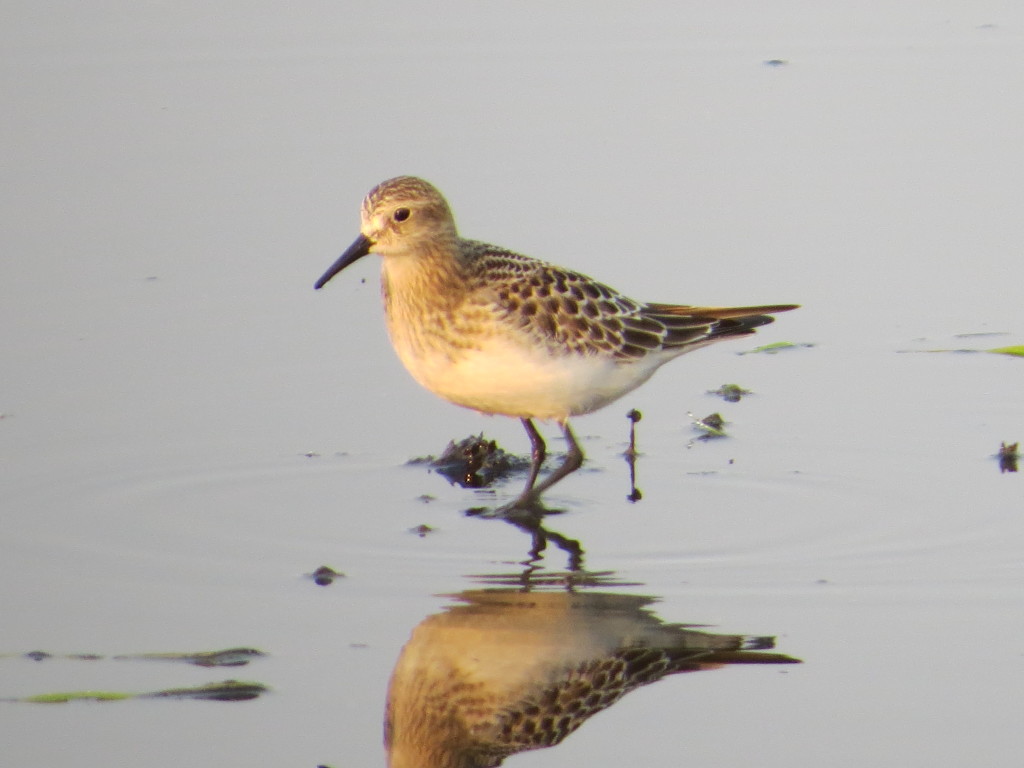
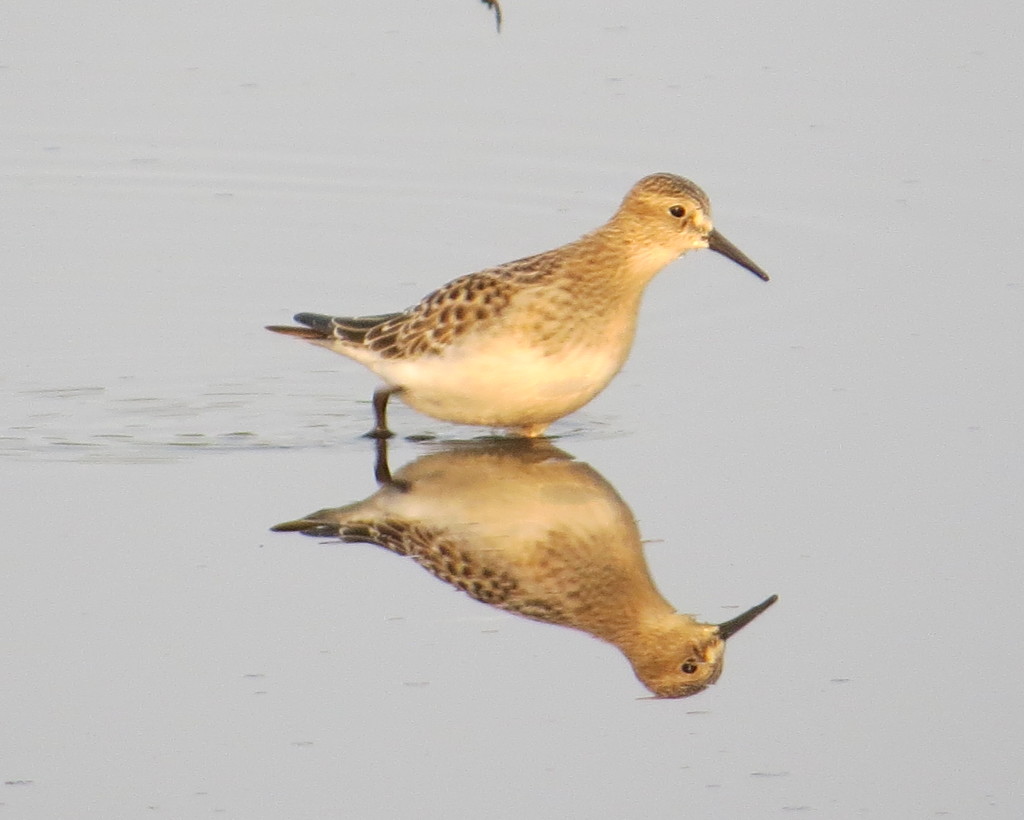
Having spent a great deal of time with these birds in good light, I think it’s fair to say that the Baird’s is near the top of my favorite shorebirds list.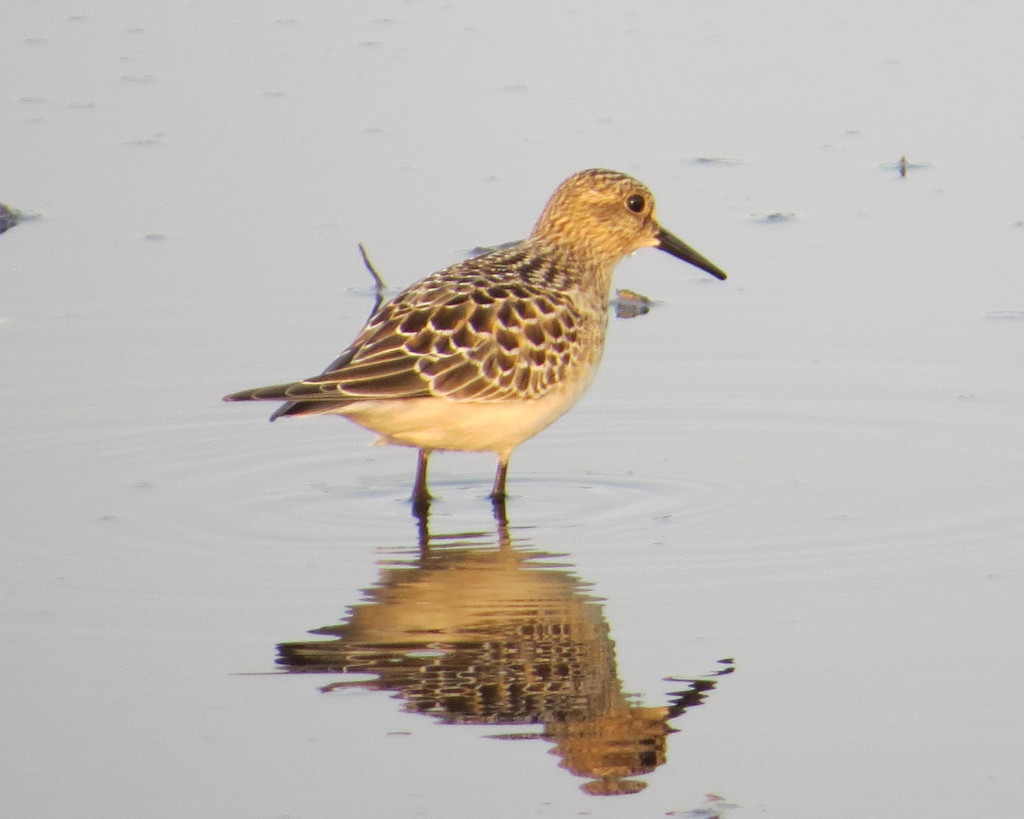
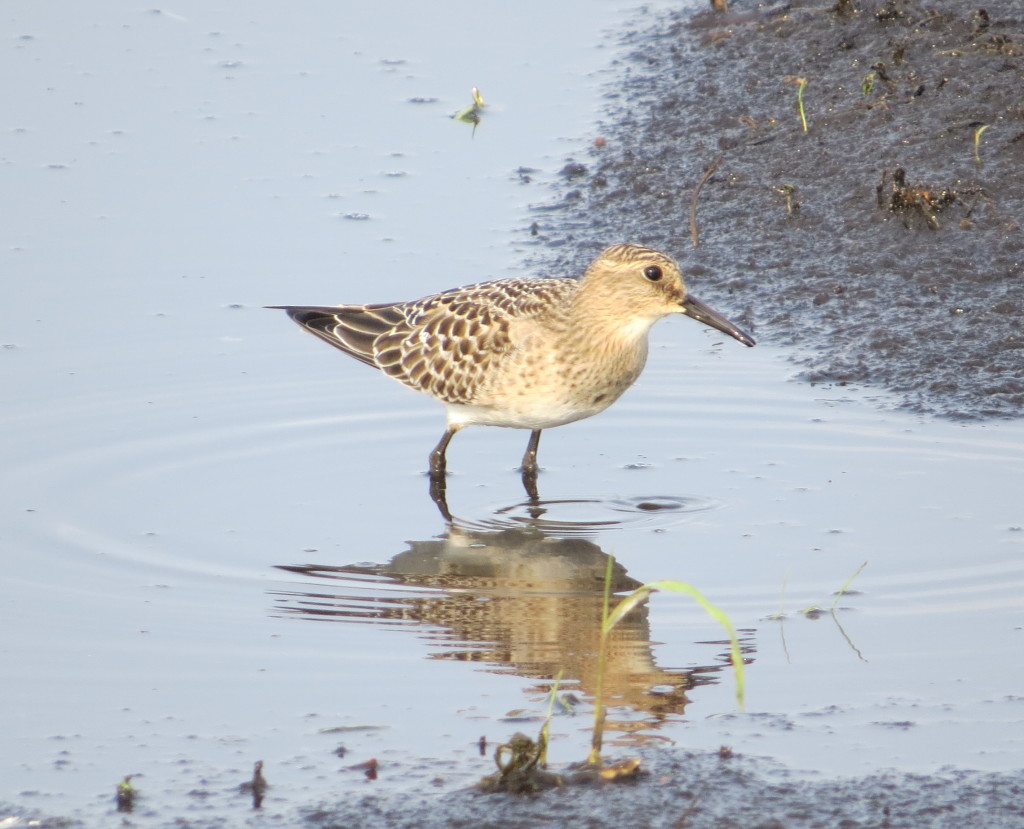 One of the benefits of a having a patch is that, in addition to looking for new birds that have joined the party, you can also keep tabs on the regulars, like the two Stilt Sandpipers that were there day in and day out.
One of the benefits of a having a patch is that, in addition to looking for new birds that have joined the party, you can also keep tabs on the regulars, like the two Stilt Sandpipers that were there day in and day out.
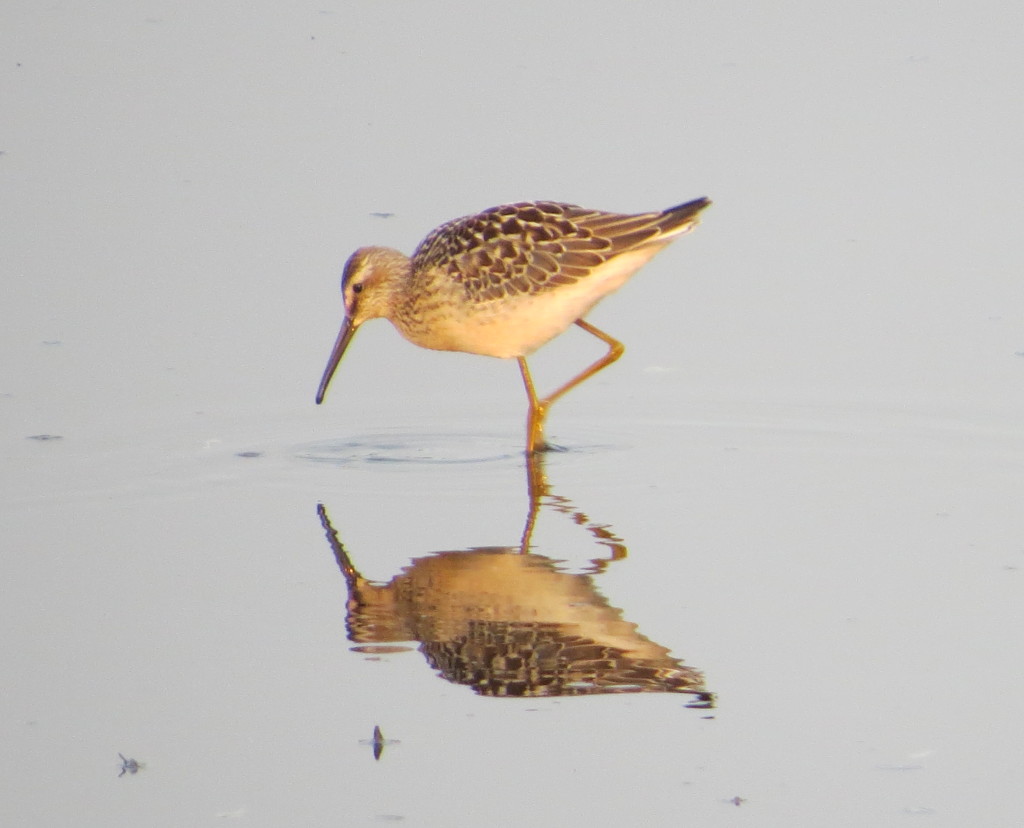
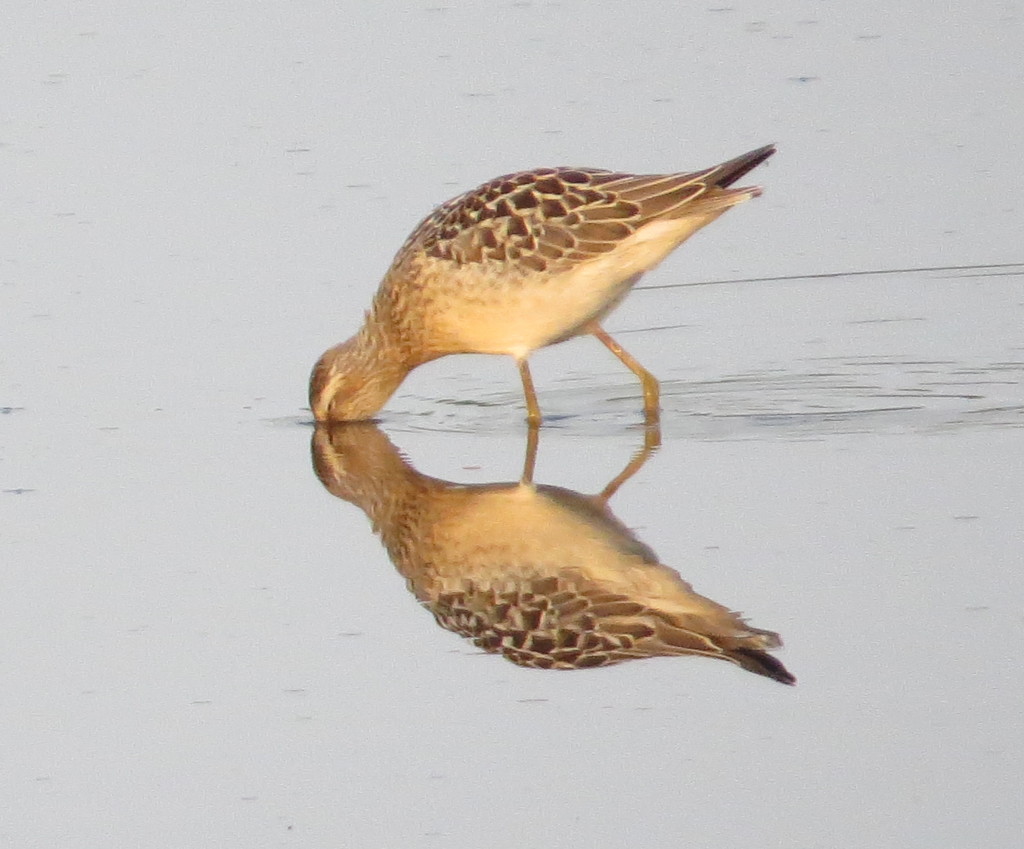
It was always exciting when there was someone new in the mix. This lone Semipalmated Plover was one of my favorites. Every day I looked for it among the myriad of Killdeer and was always relieved whenever I found it had decided to stick around for just one more day. I also made good on my previous failing and got Evan this lifer.
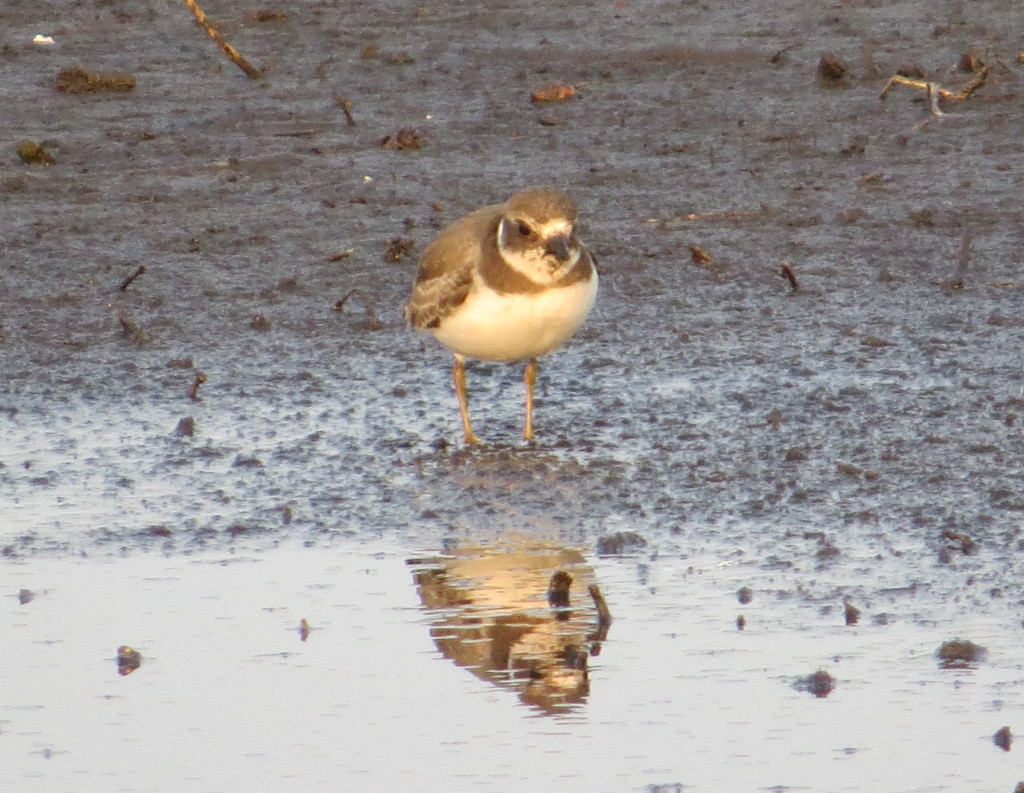
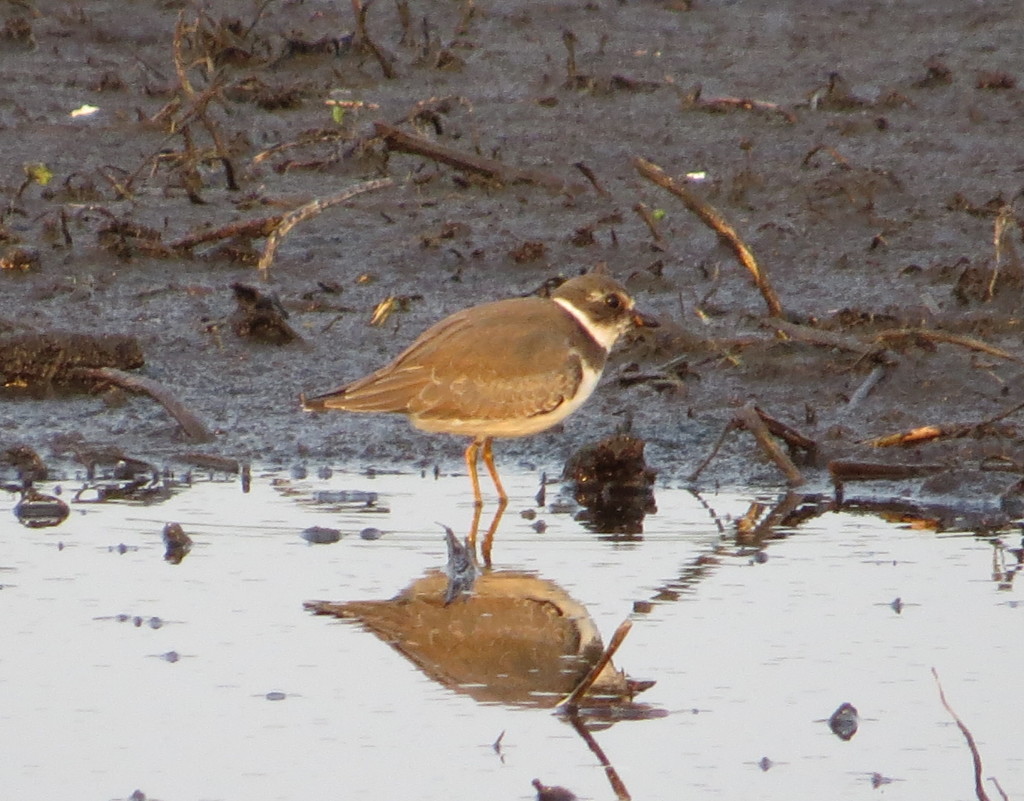
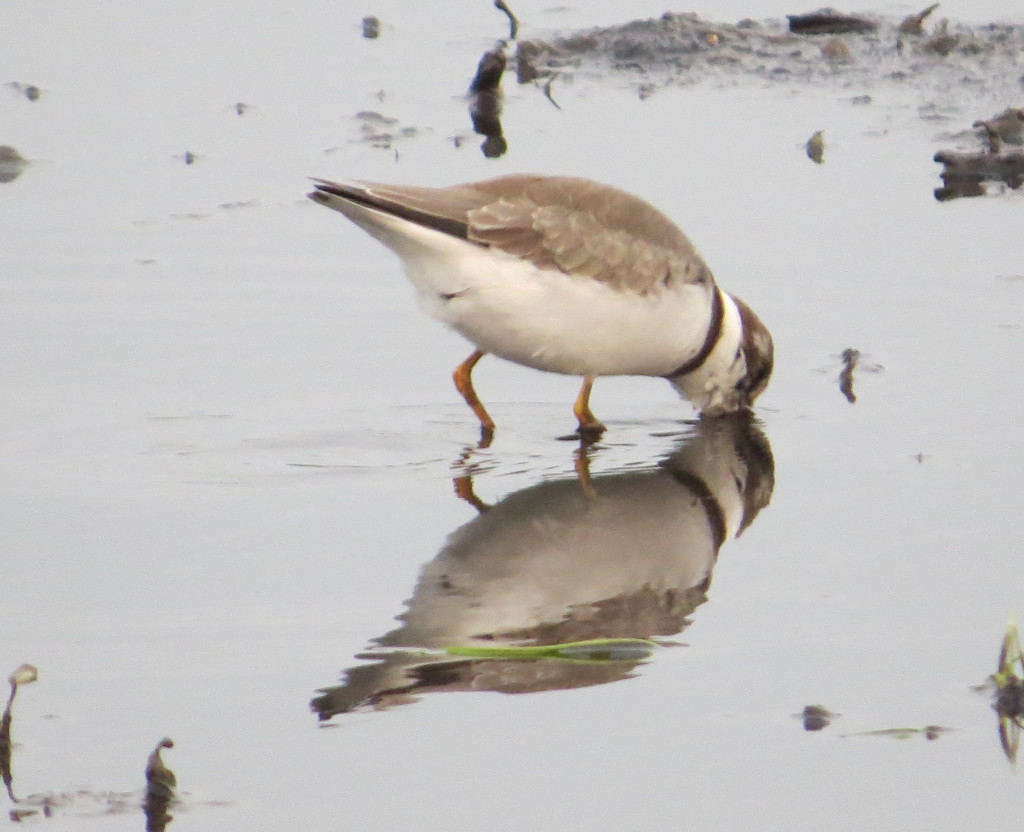 This patch I found turned out to be a great workshop on shorebird identification for myself. I had these birds close (30 feet or less) and in great light when I visited in the morning. I could clearly see subtle differences in coloration, differences in movements and behaviors, and relative size comparisons to other shorebirds. Even the ubiquitous Killdeer would sometimes do something interesting.
This patch I found turned out to be a great workshop on shorebird identification for myself. I had these birds close (30 feet or less) and in great light when I visited in the morning. I could clearly see subtle differences in coloration, differences in movements and behaviors, and relative size comparisons to other shorebirds. Even the ubiquitous Killdeer would sometimes do something interesting.
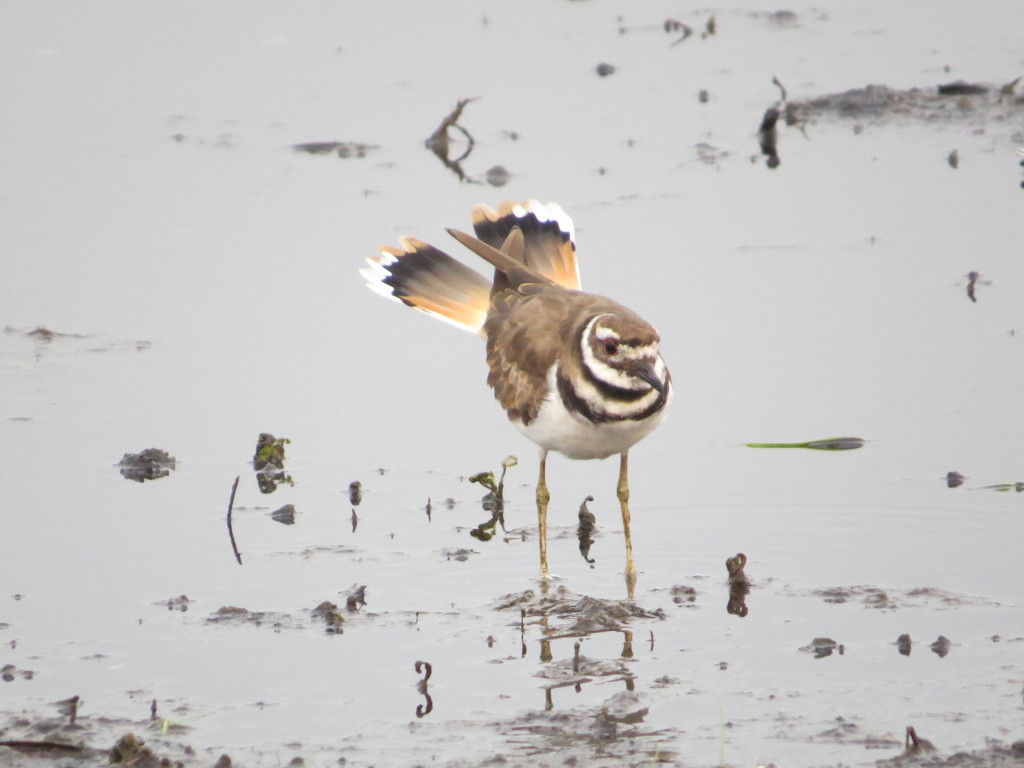
Often I would put my binoculars and camera down just to see if I could notice these things with the naked eye. Something happened that I never expected to happen–my confidence in identifying shorebirds went way up. And now I can concur with Nate the Machine that shorebirds really aren’t that hard after all. I would add that they are actually pretty fun too. In all, I tallied 11 shorebird species as an accidental patch birder. The numbers of each species were small and consistent, which made counting the birds a fun, manageable task.
As time and hot weather went on, the water kept receding in the ephemeral patch until there was nothing but some wet mud which was enough to sustain the persistent Killdeer and my Semipalmated Plover buddy but nothing else. Presently the ground is dry, and my patch birding days are over for now. But not my hopes. After all, it could still rain cats and dogs and big Plovers this fall, and I’ll be back in business. Stay tuned!

Awesome post and photos, Mr. Josh!!! You killed it with those shorebirds (something that I need working on) Sorry for being behind on my commenting things have been crazy lately but I’ll try to get back on it. Cheers to birding!!!
Thanks Caleb. It’s always nice when the shorebirds buck the scope-views-only trend AND are within biking distance–not that I actually followed your lead and hopped on a bike. I’m just too busy…or lazy…or old.
Glad to have you stop by anytime.
Nice finds at your patch! I have totally gotten into patch birding this year, and I’m already planning on doing a “patch big year” next year at a local park.
I got just the right dose of patch birding for my ADD tendencies. You put me to shame on the patch birding thing, Greg, especially when you add that whole motorless bit. Best of luck in your new endeavor next year.
Patch birding is easier when your patch includes your yard.
I’ve got 146 species (one uncountable though) for my patch so far this year, but I’m not sure if I’ll see even the five more to match last year’s 151:
BTNW was a spring miss that I might still have a shot at.
EASOs in past years have been most vocal in Late July-Early September. Will I hear one yet?
RNGR were plentiful two springs ago, and an RBME stayed at the CR Dam all of the winter of 13-14, but not last year. Can I catch them migrating south?
I saw two EATOs in fall two years ago, but they were here for just the one day. WIWR, AMWO, and WISN were freakish one-day shows last year, all in spring.
I’ve completely written off WIFL when it’s not singing and SCTA when it’s not red.
There’s still a small chance of me catching another VESP or HOLA nearby enough for my definition of “patch”.
Or there’s new birds, too: lifer ABDU or area-first SNGO or NSHO are high on my likelihood list. Maybe I’ll be able to make a GRSC or CACG. Or I could find one of those erratic gulls!
That’s an impressive patch total accomplished with some good birds. Your fierce dedication coupled with the analytical mind of an actuary creates a patch birding force to be reckoned with. Do you eBird, Adam?
I do not eBird, I’m committed to my Rite-in-the-Rain notebooks.
I’d like to put them in eBird eventually, but I’m so far in arrears to even getting them in the MOU’s website.
IMO, eBird is like your house payment and MOU is like your credit card bill. Important to pay both, but pay the house first! eBird is so much more useful to everyone and not just MN birders!
In the seven days after I posted, I’ve got Scarlet Tanager, Franklin’s Gull, and Marsh Wren. The Gull and Wren were my firsts east of MN-15.
I did not expect any of them. The Wren I saw just because I wanted to look at the R.C. Kinglet in the same bush/tree, ruminating on the chatter differences between RCKIs and HOWRs and… ‘Hey: there’s one of each in that Willow! That’s quite an eyebrow on that HOWR! That’s not a HOWR!!! Bewick’s? Carolina? Marsh! That’s good! Gotta catch my bus!”
Marsh probably better than the other two because no one’s doubting me without photographic evidence on a MAWR.
Ooooo, a Carolina would be sweet. I can’t believe I haven’t added that to me life list yet.
Well, I started to enter data in MOU before I even knew about eBird, and built a spreadsheet to allow me to better transfer data to MOU. I don’t even know what format eBird accepts.
Seems I posted that last reply to the wrong comment.
From what I recall about Carolina, those that make it to MN are confused birds that migrate north from their breeding range in winter.